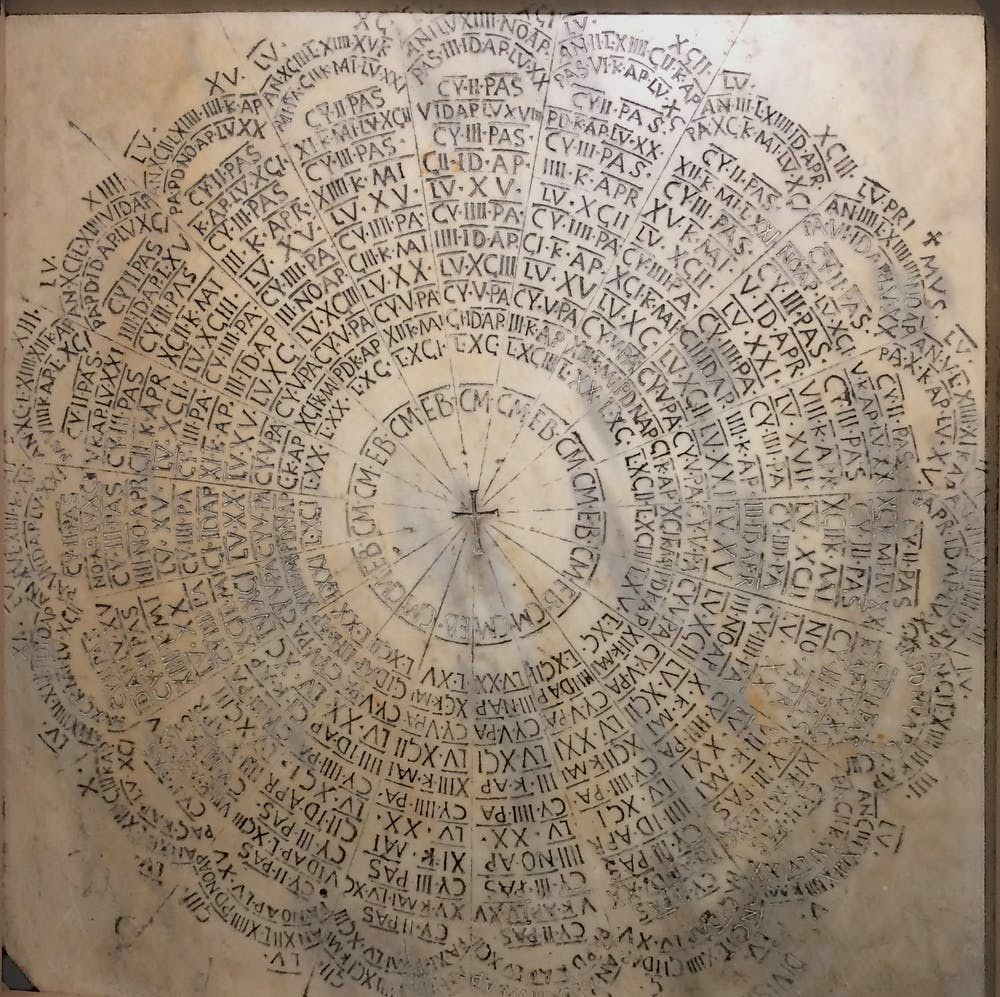
In an article published on The Conversation, scholar MATTHEW S CHAMPION, of Australian Catholic University, look at the rather complicated history of the Western calendar…
For something that’s meant to lend order to our lives, the modern Western calendar has a messy history. The mess, in part, comes about because of the difficulty of co-ordinating the orbits of celestial bodies with the cycles of day and night, and the passage of the seasons.
The year measured by the Earth’s orbit around the sun is roughly an unruly 365.2422 days. The Moon is likewise not a fan of whole numbers. In the space of a year, there are around 12.3683 lunar months. Societies have traditionally tried to make sure that the same seasons lined up with the same months.

PICTURE: Behnam Norouzi/Unsplash
Ancient calendars from Mesopotamia, for example, co-ordinated months and seasons by adding extra months every now and then, a process called intercalation. In some lunar systems, though, the months can wander through the seasons – this is the case for the Islamic Hijri calendar.
The solar calendar of ancient Rome gives rise to our modern Western calendar. The Julian calendar, named after Julius Caesar’s reforms of 46/45 BCE, approximated the solar year to 365.25 days and inserted an extra day each four years. That left a rather annoying 11 and a bit minutes unaccounted for. More on those minutes later.
“As the Roman empire shifted into the world we now call the middle ages, the power that bent time most successfully was that of the church. But just as in the present, the church was a multiplicity of intersecting powers with local and regional differences, and with a variety of internal identities and struggles. The start of the year, for example, could vary widely across medieval societies.”
The Julian calendar also left us a legacy of months in strange positions. Our eleventh month, November, derives from the Latin for the number nine, a result of moving the start of the year from March to January.
New months and names were juggled and rejigged to match the mechanisms of power. August, for example, is named for the Emperor Augustus. As the great Australian historian Christopher Clark has put it: “as gravity bends light, so power bends time”.
Christian time keeping
As the Roman empire shifted into the world we now call the middle ages, the power that bent time most successfully was that of the church. But just as in the present, the church was a multiplicity of intersecting powers with local and regional differences, and with a variety of internal identities and struggles. The start of the year, for example, could vary widely across medieval societies.
Sometimes it was 25th March, the day commemorating the appearance of the angel Gabriel to Mary. Other times it was 25th December, the day agreed as Jesus’ birthday (the perfect nine-month gestation period). Sometimes, it was confusingly the moveable date of Easter, making years of changing length.
It was during this period that the problematic 11 and a bit minutes had their revenge. The seasons began to shift, little by little, and this had important implications for Christian time-keeping.
The date of Easter Sunday (another point of contention) was timed to follow the Northern Spring equinox, a natural symbol of light conquering darkness. But as that equinox began to slip back in time, a distinction started to emerge between a “legal” Easter – that decreed by the calendar – and a “natural” equinox, ie the equinox that could be observed.

Calendar of the dates of Easter, for the years 532–632 AD (Marble, in Museum of Ravenna Cathedral, Italy). PICTURE: Wikimedia Commons
As the gap widened, scientists and theologians (often the same people) fought it out over proposals to reform the calendar. Should a number of days be omitted from the year, just once, to realign legal and observable time? If so, how many? And who should be in charge of the change?
The question became particularly intense in the 15th century with a number of calendar reform proposals failing the test of pragmatics or political backing from rulers across Europe. One such proposal was discovered recently hidden inside a printed book at the University Library in Cambridge.
It was written in 1488 by a theologian from the University of Louvain named Peter de Rivo and suggested 10 days be removed from the calendar. Peter thought that a celebration known as the jubilee, where crowds of pilgrims travelled from all over Europe to Rome would be the perfect time for making the reform known to the world. The proposal was not the first or last to sink like a stone.
But eventually those 10 days did disappear, when Pope Gregory reformed the calendar in 1582. This new calendar, the Gregorian calendar, jumped from 4th October, 1582, to 15th October, 1582. It also made a better approximation of the natural length of the year by manipulating leap years over a 400-year cycle.
The 1582 reform landed in a world rent by religious divisions, some old, some new. Protestant England did not adopt the changes till the 18th century. Many Orthodox Christian communities continued to follow the Julian calendar – with later revisions to that calendar proving contentious and provoking further schisms.
We rely on our readers to fund Sight's work - become a financial supporter today!
For more information, head to our Subscriber's page.
Unreasonable nature
It’s easy to feel lost in time. The calendar helps to give us a map to the shifting revolutions of the seasons, the shape of our lives, and the larger arcs of history. But while we are placed in the matrix of calendar time, we also make it: could we do better than the Gregorian calendar?
That question was asked with particular vehemence in the 18th century by so-called enlightened thinkers, and was brought to a head in the French Revolution. In 1793, the revolutionary government regularised the month to a standard 30 days (each with three weeks of 10 days), leaving a messy five to six unallocated days a year, and giving workers only three days off each month. The start of the year was shifted to the autumn equinox, because an égalité (equality) of light and dark was a symbol of the new republic’s ideals.
The calendar was a victory of reason, if reason is aligned with simplicity, clarity and the number of our fingers. But, as we have seen, in astronomical terms nature is stubbornly unreasonable. The system was short-lived.
Part of the problem with calendar reform is that calendars have to do with our lived experiences of time, our habits, our rhythms, our memories. To make radical changes requires particular fervour (or megalomania).
But the history of calendars can also make us ask if we might modify our ordering of time in more gentle ways. This may not mean altering the calendar at a global or national level. But what about us here in our different regions of Australia? What if we finally acknowledged that we don’t live with a four-season year, adopting the far more interesting and attentive seasonal calendars developed by Indigenous cultures? ![]()
Matthew S Champion is a senior research fellow in medieval and early modern studies at Australian Catholic University. This article is republished from The Conversation under a Creative Commons license. Read the original article.





